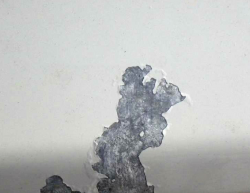— Ford F-150 peeling paint problems have caused a class action lawsuit that alleges corrosion damages the aluminum hoods, roofs and side panels. In addition, the F-150 paint warranty is allegedly meaningless due to the terms of the warranty.
Plaintiff Tina Nelson owns a 2014 Ford F-150 SuperCrew she purchased in 2016, but in 2018 she noticed the hood, roof and side panel paint was peeling and corroding.
The plaintiff took the truck to a Ford dealership in Oklahoma for it to be repaired and technicians allegedly determined there were problems with the paint primer that caused the paint to peel.
A Ford representative allegedly asked the dealer technician if there was a defect in the paint, but the technician allegedly replied, “It is probably a defect in the primer. The paint doesn’t appear to have adhered to it.”
According to the lawsuit, Ford told the plaintiff no assistance would be provided, even though the plaintiff argues the truck was still within the 5-year extended corrosion warranty.
Nelson says corrosion and peeling paint have exposed the underlying surfaces which will cause even more rust and weakening of the underbody.
According to the class action, the lawsuit includes, "All persons in the United States and its territories who within the applicable statute of limitations period, and as shown by Defendant’s records, purchased or leased a new or used Ford F-150."
Ford manufactured its F-150s for many years using steel bodies but switched to aluminum body panels in the 2000s to decrease the truck's weight and increase fuel economy. According to the plaintiff, Ford's choice has come at a price to F-150 owners who must pay to repair areas where the paint has peeled.
Ford has allegedly known about the paint, primer and corrosion problems for years based on technical service bulletins (TSBs) issued to dealerships.
TSB 04-25-1 was released 2004 for 2004 Ford F-150s:
"Some vehicles may exhibit a bubbling or blistering under the paint on aluminum body parts. This is due to iron contamination of the aluminum panel . . . Ford’s Scientific Research Laboratory has performed a number of tests on vehicle body parts returned for corrosion related concerns. Testing has revealed that the aluminum corrosion was caused by iron particles working their way into the aluminum body party, prior to it being painted."
TSB 06-25-15 was issued in 2006 in which the bulletin warned technicians about aluminum body panel corrosion in 2004-2007 F-150s. Then in 2016, TSB 16-0028 warned about aluminum panel corrosion in 2004-2016 Ford F-150 trucks.
In August 2017, Ford issued TSB 17-0062 for 2002-2017 F-150s that told technicians to replace the corroding aluminum panels.
Another bulletin was issued in February 2019, with TSB 17-0062 covering 2004-2018 Ford F-150s:
"Some 2000 and newer Ford, Lincoln and Mercury vehicles equipped with aluminum body panels may exhibit corrosion concerns appearing as bubbled and/or peeling paint with or without accompanying white dust. Panel replacement is recommended."
According to the class action, an F-150 customer expects that for the money they pay, the paint shouldn't peel before the truck has 50,000 miles on it. Additionally, Ford knows the extended warranty for body panel corrosion is useless because it applies only if an aluminum panel "perforates."
But the plaintiff says Ford is fully aware that it is not possible for aluminum body panels to perforate.
The Ford F-150 peeling paint lawsuit was filed in the U.S. District Court for the Western District of Tennessee, Western Division - Nelson, et al., v. Ford Motor Company.
The plaintiff is represented by Glassman, Wyatt, Tuttle & Cox, P.C., and McGuire Law, P.C.
CarComplaints.com has thousands of complaints about Ford F-150s going back to 1977.

